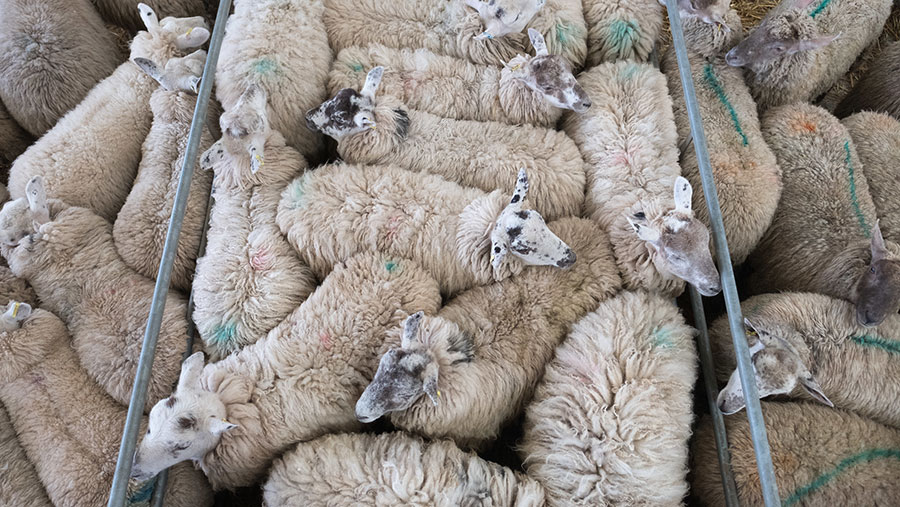EU export demand driving strong trade for finished lamb
 © Tim Scrivener
© Tim Scrivener Demand from Europe is holding up lamb prices despite higher-than-average throughput numbers and heavier weights coming forward after an excellent growing and finishing period.
In Scotland, Lawrie & Symington’s Brian Ross said the trade had been exceptional with throughput and prices well up on the same period last year.
“The fine weather in Scotland at tupping and lambing has produced a much bigger lamb crop than usual. So far this season, numbers have been 15-20% up on 2016,” said Mr Ross.
Weak pound
Despite the increase in supply, prices have remained firm, bolstered by a weak pound which continues to drive a strong export trade.
See also: Buoyant pig market hits three year high
On Monday (17 July) Lanark market sold 1,930 lambs – 500 more than the same week 12 months ago.
“Even with that extra throughput, prices averaged 17-18p/kg more than last year – it is the best trade for at least five years,” said Mr Ross.
The biggest demand has been for standard-weight animals (39-45kg), which averaged 213p/kg.
It is a picture that has also been seen at the opposite end of the country in Ashford Market, Kent, which sold 3,000 lambs on Tuesday 18 July compared with 2,650 at the equivalent sale in 2016.
Grass growth slowed
Hobbs Parker’s auctioneer Peter Kingwill told Farmers Weekly that, even though the dry weather had slowed grass growth, the dry matter was still there in the sward to create excellent finishing conditions.
“We have seen lamb prices in excess of £120/head or 220p-240p/kg for 42-45kg lambs,” Mr Kingwill said.
“The current state is particularly positive and it looks like remaining strong.
“Australian and New Zealand lamb supplies are going to China and other Far East markets.
“It has left a strong demand in Europe which British lamb is supplying on the back of the weaker sterling,” he added.
Brexit
At Bakewell Market in Derbyshire, Alistair Sneddon of Bagshaws said the UK’s dependence on the EU trade emphasised the importance of winning a favourable deal in Brexit negotiations.
“We must achieve a significant export trade in any deal with Europe because the market is vital to our trade,” he said.
At this week’s market, throughput on 17 July was up by 200 head on the previous week at 1,270 lambs and an average of 203p/kg for 39kg to 45kg liveweight lambs.
“Even though numbers are rising by 200 a week, we are only seeing slight falls in prices of about 2p/kg each week,” said Mr Sneddon.
Second weekly market
The picture has been confused slightly by the addition of a second weekly market on Thursdays which attracted 800 head on 13 July.
In total, the market has seen 2,070 lambs through, compared with the same week last year when 1,800 lambs achieved an overall average of 185p/kg.
Bagshaws’ auctioneer Peter Oven said the demand for heavier lamb was the strongest at this week’s Monday market.
“The demand is down to better killing out percentages for larger animals and the fact that the cost of slaughter is the same whether the animal is bigger or smaller. So it’s more cost-effective to go for heavier weights,” Mr Oven explained.
Wales
Meanwhile, in Wales, a spokeswoman for Welshpool Livestock Sales said that lamb prices across all weights at Monday’s market (17 July) were significantly up on last year’s average figure of 181p/kg.
Throughput was 3,687 head, which was up 487 year-on-year with light lambs (25-32kg), averaging 196p/kg.
All other weights were above 200p/kg with the highest average price of 213p/kg for 45-52kg lambs. Even overweight lambs (+52kg) recorded prices of 206p/kg, the spokeswoman said.
